The energy and utilities industry is replete with hazards, so ensuring the safety of personnel and equipment is paramount. In addition to purpose-built safety solutions and products designed to comply with various regulatory requirements, products designed to support remote operation and automation, ensure electrical continuity, and improve sustainability are growing increasingly popular as the industry modernizes and expands to keep pace with demand. Mark Russell, the Technical Application Support Manager at RS, introduces six product categories that contribute to improving safety in these hazardous applications even though they’re not traditional safety solutions.
Mark Russell, Technical Application Support Manager, RS
The energy and utilities industry is comprised of two main sectors: the energy sector, which includes processes related to the exploration, extraction, production, transportation, and distribution of oil and gas products made from hydrocarbon reserves, and the utilities sector, which encompasses the operation and management of utilities including power, water, natural gas, and wastewater.
Since both sectors serve an overwhelming majority of the general public, increased demand and market growth are directly tied to increases in population, urbanization, and globalization, which have remained fairly steady in recent years. As a result, new and existing energy and utility companies are facing numerous challenges, including improving efficiency and uptime, reducing maintenance time and cost, and satisfying evolving consumer demands related to sustainability improvements, governmental demands concerning grid resilience and energy efficiency, and regulatory demands regarding employee, equipment, and product safety.
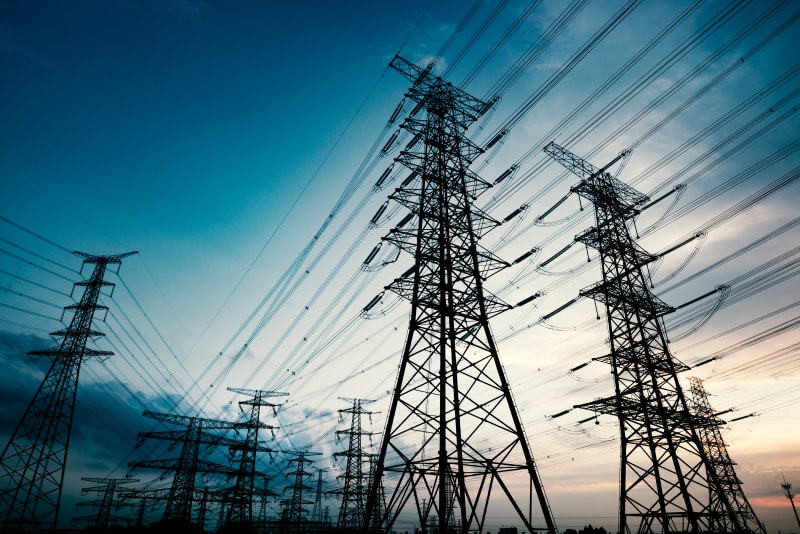
The energy and utilities industry is replete with hazards, including chemical exposure, extreme temperatures, mechanical and electrical risks, fires, explosions, ingress, and cyberattacks. So, of these numerous challenges, satisfying safety and compliance requirements is paramount.
Due to the various processes that the energy and utilities industry entails and the diverse hazards it’s challenged to overcome, there’s a wide variety of electrical and electronic product solutions that can help energy and utility companies achieve their safety and compliance goals. These solutions include purpose-built safety products, such as safety switches, emergency stop buttons, and light curtains, and products certified to withstand a range of environmental hazards or rated to withstand the rigors of challenging operating conditions.
But as the industry modernizes and expands to keep pace with demand, products beyond the scope of traditional safety solutions are becoming increasingly essential for achieving employee and equipment safety and compliance. These solutions include products that support remote operation and automation and ensure electrical continuity and reliable connectivity, such as human-machine interfaces, power supplies, wireless communications equipment, liquid-level sensors, filters, and lubricants.
Human-Machine Interfaces
Human-machine interfaces (HMIs) are graphical control panels used to monitor and manage programmable logic controllers (PLCs), remote terminal units (RTUs), and other intelligent electronic devices (IEDs) and are widely employed throughout the energy and utilities industry.
HMI applications common to both the energy and utilities sectors include monitoring and managing pumps, valve stations, and pipeline flow rates and pressures. Other utility applications include monitoring and controlling water treatment processes and power and water distribution and consumption. In the energy industry, HMIs are often used to monitor and control drilling processes, production rates, and safety systems on oil rigs and in refineries. Ruggedized HMIs approved for use in hazardous areas are even used for directional drilling, measurement- and logging-while-drilling, cementing, fracking, casing and coiled tubing, blowout prevention system, mud logging, and choke control applications.
So, it should come as no surprise that HMIs with ruggedized form factors and relevant certifications, ranging from IP and marine approvals to NEMA and ATEX ratings, are popular solutions for energy and utility applications. The most beneficial of these solutions also offer advantages including customizable interfaces, enhanced safety features, multiple connectivity options, data logging and analysis capabilities, and remote access.
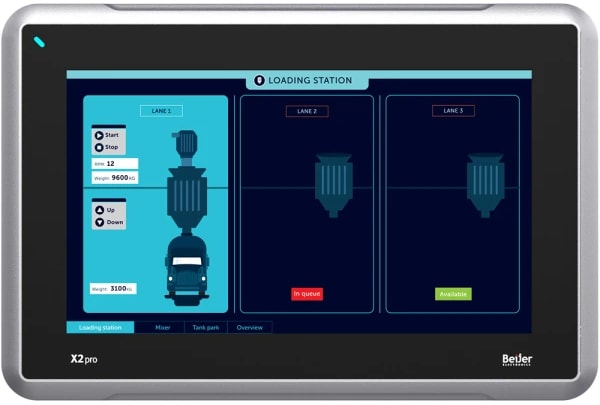
Beijer Electronics’ X2 Series and X2 Extreme Series HMIs check all of these boxes. The X2 Series features robust die-cast aluminum form factors that ruggedly withstand mechanical stresses and extreme temperatures; IP65/66, NEMA 4X/12, UL50E Type 4X/12, and marine protection ratings ideal for demanding industrial environments; and UL, CE, FCC, and KCC certifications that ensure quality assurance and global compliance. It also features high-performance LCD touchscreens with customizable interfaces, integrated IEC 61131-3 PLC functionality for enhanced control, and ARM processors that deliver swift program execution and screen transitions, which is essential for complex visualization tasks.
Additional advantages of Beijer’s X2 HMIs include support for Ethernet, serial, and USB protocols to streamline operations, timely alerts about potential hazards and malfunctions, data logging and analysis capabilities that improve decision-making, and remote access capabilities, which are especially beneficial for applications with remote equipment or facilities. They’re also easy to program, IIoT-ready, and available in a variety of sizes for enhanced ease of use and flexibility.
X2 Extreme HMI panels are further ruggedized for use in rugged outdoor environments and hazardous areas where gases, vapors, and dust are present. Like the X2 Series, they are also sealed to IP66, NEMA 4X/12 and UL Type 4X/12 standards and compliant with UL, CE, FCC, and KCC requirements. But they additionally offer ULC1D2, Atex Zone 2, and IECEx Zone 2 certifications and reliably withstand high vibration, high-pressure washdowns, and operating temperatures extending from -30°C to +70°C. Other features include high-brightness displays, the ability to visualize the same content across different target platforms, such as mobile devices, tablets, and PCs, without any conversion or reengineering, and optional integrated CODESYS PLC functionality. Additional options include cost-effective, rugged-only versions for applications that don’t require marine or hazardous certifications and certified-only versions for applications that do require marine or hazardous certifications but don’t require an especially rugged design.
Energy and utility companies that employ HMIs in their operations are also likely to need HMI modules and accessories, PLCs, Ethernet cables, industrial PCs, remote I/O modules, AC drives, motors, sensors, industrial routers, safety relays, and emergency stop switches.
Power Supplies
Power supplies are an essential component of all electronic equipment, and those engineered for use in hazardous environments like the energy and utilities industry boast even more safety certifications than standard power supplies, which are already subject to rigorous safety requirements. In addition, today’s high-efficiency industrial power supplies often deliver more than just electrical continuity.

SolaHD’s SDN-C Series DIN rail-mounted power supplies, for example, have a compact, durable, and energy-efficient design that frees up physical space, minimizes heat generation, reduces energy consumption and costs and maintenance requirements, and meets stringent safety standards, including low-voltage and EMC directives, marine certifications, and hazardous location certifications, such as Class I Zone 2, ATEX, IECEx, and ABS Type approval.
The series also features active power factor correction per EN61000-3-2; built-in over-temperature, overload, and short circuit protection; a high mean time between failure (MTBF); sag immunity, which helps minimize downtime and extend equipment lifetimes; and user-friendly LED diagnostics that provide quick status insights and facilitate rapid troubleshooting to reduce system downtime. Additional features include a wide range of operating temperatures, universal power input, dual output terminals for convenient wiring, parallel operation for simple installation and maintenance, compatibility with SolaHD redundancy modules, and a five-year limited warranty.
SolaHD’s SDN-C Series DIN rail-mounted power supplies, for example, have a compact, durable, and energy-efficient design that frees up physical space, minimizes heat generation, reduces energy consumption and costs and maintenance requirements, and meets stringent safety standards, including low-voltage and EMC directives, marine certifications, and hazardous location certifications, such as Class I Zone 2, ATEX, IECEx, and ABS Type approval.
The series also features active power factor correction per EN61000-3-2; built-in over-temperature, overload, and short circuit protection; a high mean time between failure (MTBF); sag immunity, which helps minimize downtime and extend equipment lifetimes; and user-friendly LED diagnostics that provide quick status insights and facilitate rapid troubleshooting to reduce system downtime. Additional features include a wide range of operating temperatures, universal power input, dual output terminals for convenient wiring, parallel operation for simple installation and maintenance, compatibility with SolaHD redundancy modules, and a five-year limited warranty.
In the energy and utilities industry, power supplies like these are used for conveying and material handling equipment; powering the instrumentation panels, control systems, and on-site machinery in refinery control rooms, offshore drilling platforms, and extraction sites; powering control panels for water purification and distribution; powering control systems for pipeline flow, pressure monitoring, and safety systems; and powering control rooms that manage the distribution of electricity and gas.
Supporting products include mounting hardware, connectors, cable management, circuit breakers, fuses, and other protection, fans and thermal management, meters, and thermal imagers.
Wireless Communications Equipment
Wireless access points play a vital role in modernizing and optimizing energy and utilities operations since wired connectivity is often unfeasible or exorbitantly expensive due to the vast, remote, and challenging environments common to this industry. They’re essential for remotely monitoring the status of equipment and environmental conditions and relaying that data in real-time to support maximum uptime and predictive maintenance procedures, and they’re widely used in isolated oil and gas drilling sites, electrical substations, water and gas utilities, and power distribution and transmission operations. Characteristics of wireless access points ideal for use in this industry include robust design, quick and easy installation and activation, and seamless connectivity.
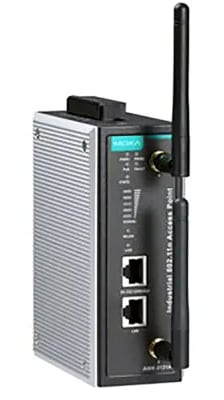
Moxa’s AWK-3131A Series wireless LAN access points are an excellent example. These access points feature a rugged, EMI-resistant design that’s quick and easy to install and deploy and compatible with Power-over-Ethernet (PoE) technologies, which can reduce the need for separate power infrastructures. They offer data rates up to 300Mb/s, which enables real-time remote monitoring and swift control that can help keep personnel out of harm’s way, and can operate on both the 2.4 and 5GHz bands. They also have a wide operating temperature range (-40°C to +75°C), Turbo Roaming capabilities and redundancies that ensure seamless connectivity even in vast installations like power grids and pipeline networks, and the MXview Network Management Utility, which helps users visualize wireless connections and ensure comprehensive Wi-Fi coverage.
Operators who employ these wireless access points may also need antennas, cables, surge arrestors, terminal block adapters, and mounting hardware.
Liquid-Level Sensors
Liquid-level sensors also contribute to the safety of energy and utilities operations, and especially models that combine expected features like rugged, safety-certified form factors with Bluetooth wireless technology, app-based remote control capabilities, diagnostics capabilities, data encryption, and the ability to reliably differentiate between various mediums, such as water and oil. Sensors like these are used to monitor fluid levels in applications including storage tanks, open basins, pump shafts, and canal systems in remote and hazardous locations.
Endress+Hauser’s Micropilot FMR10 liquid-level sensor is an especially good choice for improving overall safety in energy and utilities operations.. This smart, rugged, and cost-effective sensor uses guided wave radar rather than non-contact radar to continuously monitor the level of various liquids and, as such, can reliably measure the amount of various liquids (e.g., oil and water) within a single tank, which is crucial for applications including oil and gas process tanks; steam boilers, which emit vapors that can interfere with microwaves; and distillation columns, which separate chemicals in several boiling stages.
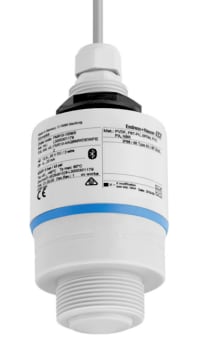
To reliably withstand the hazards of these and other applications ranging from hydroelectric reservoirs to wastewater treatment cesspools, settling ponds, regulating ponds, and reverse osmosis equipment, the Micropilot FMR10 liquid-level sensor features a durable polyvinylidene fluoride (PVDF) housing proven to withstand harsh conditions for a long lifetime, IP66/68 and NEMA 4X/6P sealing, hermetically sealed wiring, and fully potted electronics that eliminate the possibility of water ingress. To support a broad range of applications, they offer a compact form factor with front and rear threads for installation flexibility. To help improve safety, they feature Bluetooth wireless technology; real-time, app-based commissioning, operation, and maintenance, secure remote access; encrypted point-to-point data transmission and password protected communication; diagnostics information according to NAMUR NE107, with remedial measures in the form of plain text messages; and a global network of on-call technical experts.
Endress+Hauser’s Micropilot FMR10 liquid-level sensor is also RoHS compliant and lead-free compatible and supports up to 15 languages, process temperatures extending from -40°C to +60°C, process pressure extending from -14 to 43psi, and environmentally responsible recycling concepts.
Supporting solutions for sensors like these include mounting hardware, connectors, and AC-DC power supplies.
Filters
Filters have long played a role in ensuring that electrical and electronic systems adhere to regulatory standards for emissions and safety. But given the increased electronic complexity of equipment employed in the energy and utilities industry, operators are increasingly reliant upon filters to prevent electromagnetic and RF interference (EMI and RFI) from disrupting data transmissions and the automated systems that rely on them and causing unplanned downtime.
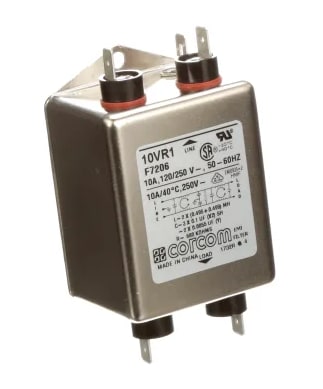
TE Connectivity’s Corcom R Series EMI filters, for instance, are often used to ensure that IIoT devices transmit accurate information to connected systems and to safeguard automated processes from the effects of interference, which can range from misreads to malfunctions, to maximize safety, uptime, and productivity. Corcom EMI filters are compliant with globally recognized safety regulations, including UL, CSA, and VDE, and are widely used in oil and gas, water and wastewater, electrical power distribution, and utilities applications.
For example, TE’s Corcom EMI filters are used to protect sensitive equipment in offshore drilling rigs from power disturbances and to filter EMI from the power lines that supply oil and gas pipeline control and monitoring equipment to ensure stable data communications. Water and wastewater applications include safeguarding water treatment control systems and SCADA systems from power disturbances that could otherwise affect accurate monitoring processes and water quality, as well as to ensuring the smooth and interference-free operation of pumping station electronics, which are necessary for the consistent supply and treatment of water.
Electrical power distribution applications include protecting transformer monitoring systems from power disturbances to ensure accurate data collection and early fault detection and filtering electronic noise to ensure the stable operation of the control systems that manage power distribution. And utilities applications include reducing interference in smart grid power line communication systems, which allows for more efficient data transmission between grid components, and protecting substation control systems and relays from electromagnetic disturbances that could compromise grid stability and reliability.
Energy and utility companies that employ these EMI filters in their operations are also likely to need wire, power cords, and AC-DC power supplies rated for use in hazardous locations.
Lubricants
Lubricants serve a similar purpose as EMI filters since they help ensure that equipment runs smoothly with minimal interruptions — just in a physical rather than an electrical sense. Achieving the right balance between lubrication quality and frequency can be a challenge, but proper lubrication is essential for ensuring the efficiency and longevity of equipment. So, many operators in the energy and utilities industry are turning to newer, automated lubrication solutions like SKF’s LAGD Series SYSTEM 24 gas-driven, single-point automatic lubricators, which provide consistent and reliable lubrication to reduce friction and wear in mechanical systems, enhance operational efficiency, and extend equipment lifespans.
For example, in drilling operations, lubrication products help ensure that machinery, such as top drives and mud pumps, operates smoothly and reduce the chances of malfunctions and downtime. In pipeline operations, valve and pump lubrication ensures the efficient transportation of oil and gas with minimal friction losses. In refineries, lubrication protects components like compressors, rotating equipment, and pumps from unexpected shutdowns. Lubrication is also essential for pumping stations, ensuring the uninterrupted supply of clean water and removal of wastewater.
In water treatment plants, it enhances the efficiency and longevity of equipment including agitators, sludge dewatering equipment, and conveyors. The lubrication ensures that effluent meets regulatory standards and that equipment including aerators and decanters can process waste without interruption. In addition, the compressors, valves, and turbines necessary for the distribution of natural gas rely on lubrication to maintain efficiency and prevent leaks, and electrical substations and transformers rely on it to ensure efficient power distribution and minimize losses.
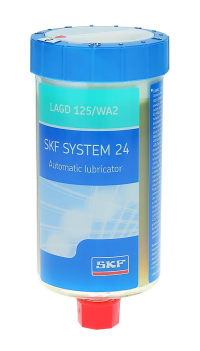
Automatic lubricators like SKF’s LAGD Series SYSTEM 24 are ideal for applications like these because they help address key industry challenges, including improving efficiency and uptime, reducing maintenance time and costs, enhancing worker safety, and optimizing lubricant usage, which can lead to long-term cost savings.
SKF’s SYSTEM 24 solutions have a compact, transparent form factor with an adjustable dispensation rate, enable installation in even space-constrained areas, allow for easy visual inspection, and facilitate timely refills or rate adjustments. They’re also approved for use in potentially explosive ATEX Zone 0 environments and filled with SKF LGWA 2 grease, which is optimized for wide temperature ranges and extreme pressures and recommended for electric motors, conveyors, fans, and pumps. Additional benefits include various configuration options, tool-free activation and time-setting features, and detachable batteries that support environmentally friendly disposal.
Supporting solutions for SKF’s SYSTEM 24 automatic lubricators include LAPA angle connectors, LAPE extension connectors, LAPF tube connectors, LAPM Y-connections, LAPN nipple connectors, LAPV non-return valves, LAPB brushes, LAPT flexible tubes, LAPC brackets and clamps, LAPP protection bases, and TLMR 201 cable plugs.
RS: A Trusted Partner for Improving Safety in the Energy and Utilities Industry
The numerous hazards inherent to the energy and utilities industry require an extensive array of safety solutions, the scope of which continues to grow as the industry modernizes and expands to keep pace with demand. Today, these solutions range from traditional purpose-built safety products and products certified to withstand rigorous environmental and operating hazards to products that support remote operation and automation, ensure electrical continuity and reliable connectivity, and help operators overcome the myriad market challenges they face, including improving efficiency and uptime and reducing maintenance time and costs, as well as improving worker and equipment safety.
RS America is a trusted partner for navigating the complexities of the energy and utilities industry, overcoming challenges, and leveraging opportunities, and our experienced customer support — which spans the design, build, and maintenance phases — is backed by the breadth and depth of our product offering and enhanced by our omnichannel ease of doing business.
For more information about the RS portfolio of safety solutions for energy and utilities applications, as well as expert insights into and advice about the industry, please visit the embedded links throughout this article. For assistance identifying, procuring, deploying, and maintaining products that can help improve the safety of your energy and utilities operations, please contact your local RS representative at 1.866.433.5722 or reach out to our technical product support team.







